
Bengali cuisine is the culinary style of Bengal, a region in the eastern part of the Indian subcontinent encompassing Bangladesh and Indian states of West Bengal, Tripura and Assam's Barak Valley. The cuisine has been shaped by the region's diverse history and climate. It is known for its varied use of flavours, as well as the spread of its confectioneries and desserts. Bengali cuisine has the only traditionally developed multi-course custom in the South Asia that is analogous in structure to the modern service à la russe style of French cuisine, with food served in courses rather than all at once. There is a strong emphasis on rice as a staple, served with fish, meat, vegetables, and lentils. Many Bengali food traditions draw from social activities, such as adda, or the Mezban.

Nadia is a district in the state of West Bengal, India. It borders Bangladesh to the east, North 24 Parganas and Hooghly districts to the south, Purba Bardhaman to the west, and Murshidabad to the north.

Rasgulla, also known in Rasagola,Rosogola or Rosogolla, is a syrupy dessert popular in the Bengal region of the Indian subcontinent and regions with South Asian diaspora. It is made from ball-shaped dumplings of chhena and semolina dough, cooked in light sugar syrup made of sugar. This is done until the syrup permeates the dumplings.

Berhampore is a city and a municipality in the state of West Bengal, India. As of 2011 census, Berhampore urban agglomeration had a population of 305,609 and was the seventh largest city in West Bengal. Berhampore is the administrative headquarters of the Murshidabad district. It is located about 200 km (124 mi) from Kolkata, the state capital. It is one of the most important business, administrative, educational and political hub of Bengal as well as of India. Congress Lok Sabha leader Shri Adhir Ranjan Chowdhury has been elected from this city since 1999. It is one of the most popular urban agglomerations of West Bengal state. It was the first centre of East India Company in India. Not only the British but also the Dutch and the French established their companies in this city and, as a result, it grew as a production hub of India. It is famous for its famous sweets such as Chanabora, Manohara, Rasgulla and many more. The city is divided into five administrative regions: Gora Bazar, Khagra, Indraprastha, Cossimbazar, Haridasmati. Berhampore was a part of Sepoy Mutiny of 1857 which took place at Berhampore Cantonment region. It was used by many foreign traders as their production hub. Before becoming a city many janpadas such as Saidabad; Farasdanga; Kalikapur had become famous. Cossimbazar had also become world famous for its muslin clothes. This city used to be the headquarters of Rajshahi administrative region till 1875.
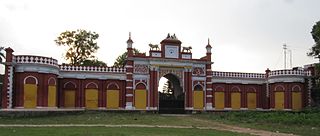
Krishnanagar is a city and a municipality in the Indian state of West Bengal. It is the headquarter of the Nadia district.

Basanta Kumar Biswas was an Indian pro-independence activist involved in the Jugantar group who, in December 1912, played a role in the bombing of the Viceroy's parade in what came to be known as the Delhi-Lahore Conspiracy.

Ras malai, rasamalai, or rossomalai, or is a dessert originating from the eastern regions of the Indian subcontinent. The dessert is called rossomalai in Bengali, ras malai in Hindi, and rasa malei in Odia. It is popular in India and Bangladesh.

Nabadwip(নবদ্বীপ), anciently Nadia or Nudiya, is a heritage city in Nadia district in the Indian state of West Bengal. It is regarded as a holy place by Hindus, and is the birthplace of the sage Chaitanya Mahaprabhu. Famous for Rass festival where city is enlited with lights, idols of God and goddesses are made on each corner of Nabadwip town. Hundreds of people gather to this small town on the occasion of raas utsab. Located on the western bank of the Hooghly River, it is considered to have been founded in 1063 CE, and served as the old capital of the Sena dynasty. A center of learning and philosophy in medieval India, the city is still noted for its traditional Sanskrit schools. The Navya Nyaya school of logic reached its peak with the efforts of some well known contemporary philosophers of Nabadwip. The great Vaishnava saint, social reformer and an important figure of the Bhakti movement, Chaitanya Mahaprabhu (1486–1534) was born here. It was after Chaitanya Mahaprabhu's birth that Nabadwip became an important center of pilgrimage for the Vaishnavas worldwide as well as for Hindus in general. Many who follow Gaudiya Vaishnavism visit Nabadwip to celebrate the auspicious birthday day of Shri Mahaprabhu, which, as per lunal calculations, occurs on Phalguni Purnima. This day is commonly known as Gaura-purnima. Aside from this, Nabadwip is visited for various other festivals like Dol Jatra and Rash purnima.

Sandesh is a dessert, originating from the Bengal region in the eastern part of the Indian subcontinent, created with milk and sugar. Some recipes of sandesh call for the use of chhena or paneer instead of milk itself. Some people in the region of Dhaka make a form of sandesh called pranahara which is softer and made with mawa and yogurt. The Gupo/Gufo style of sandesh from Guptipara is considered by some to be the "first branded sweet of Bengal".
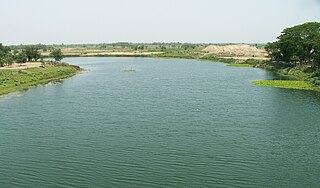
Jalangi River, is a branch of the Ganges river in Murshidabad and Nadia districts in the Indian state of West Bengal. It flows into the Bhagirathi river and strengthens its lower channel, the Hooghly.

Adhar Lal Sen was a householder disciple of Ramakrishna, the 19th century mystic saint from Bengal, and had a prominent place amongst the early devotees of Sri Ramakrishna. He had an extraordinary academic record. He lived in Beniatola street of Calcutta and graduated from Presidency College. He was a deputy magistrate by profession and also a member of the faculty of Calcutta University. He was also an accomplished poet in Bengali language. He died very young, before age thirty.
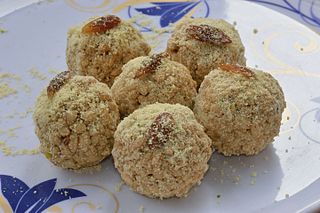
Jaynagarer Moa is a seasonal Bengali sweetmeat delicacy prepared from date palm jaggery and Kanakchur khoi. This variety of Moa originated in Jaynagar of the South 24 Parganas district in the Indian state of West Bengal. It is now a popular sweet, being produced in Kolkata and elsewhere, sometimes with cheaper ingredients and chemical flavours. Jaynagarer Moa was given a Geographical Indication tag in 2015 which will enable the product to be protected from unauthorized uses and piracy.
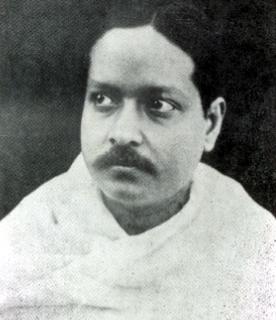
Hemanta Kumar Sarkar was an Indian philologist, author, biographer, editor, publisher, union leader, leader of the Indian freedom movement and an associate of Subhas Chandra Bose. He was a close friend and the first biographer of Subhas Chandra Bose, the co-founder of Labour Swaraj Party in Bengal along with Muzaffar Ahmed and Kazi Nazrul Islam and led the movement for the Partition of Bengal and formation of Bengali Hindu homeland in 1947.

Nobin Chandra Das (1845–1925) was a Bengali confectioner, entrepreneur, businessman and Bengali cultural icon of the second half of 19th century and early 20th century. Widely known as the creator of the iconic Bengali sweetmeat "Rosogolla", a popular limerick of 19th-century Bengal labeled him as the "Columbus of Rossogolla" or simply the "Father of Rosogolla".

Krishna Chandra Das (1869–1934), commonly referred to as K.C. Das, was a Bengali confectioner, entrepreneur, businessman and Bengali cultural icon of the early 20th century. Born in 1869 in Bagbazar, Kolkata, Krishna Chandra was the only son and successor of the Bengali confectioner and sweetmeat inventor Nobin Chandra Das. Krishna Chandra was a versatile enthusiast with a spirit of scientific exploration. He developed an electric loom, a soda fountain machine, did extensive research on homeopathy, and researched eastern and western classical music. Krishna Chandra Das became an iconic figure in the 1930s Kolkata with his original creation the "Rossomalai" and the vacuum canned "Rossogolla", which were popularized and promoted throughout India by his family organization K.C. Das Private Limited, founded by Krishna Chandra's son and successor Sarada Charan Das.
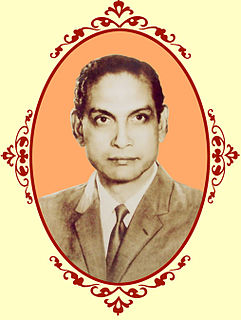
Sarada Charan Das was an Indian Bengali polymath, scientist, confectioner, entrepreneur and businessman. He was the youngest son and successor of Krishna Chandra Das and the grandson of the legendary Bengali confectioner Nobin Chandra Das. Born on 15 May 1906, he established the first confectionery company in India, named K.C. Das Private Limited, in 1946. Sarada Charan also created artwork and competed for India at the 1956 Summer Olympics in weightlifting. He is considered as the founding father of K.C. Das Private Limited and a major innovator and pioneer of the Bengali sweetmeat industry due to his contributions towards revamping, modernizing and scientifically standardizing the confectionery industry.
K.C. Das Grandson Pvt. Ltd. is an Indian confectionery famous for its sweet and snacks. It is especially known for the white spongy form of rossogolla in Bengal, invented by the founder's ancestor, Nobin Chandra Das.
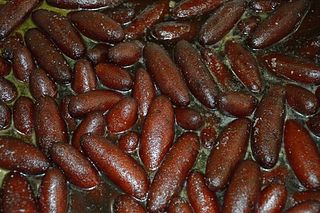
Lyangcha, Langcha, or Lemcha, is an Indian sweet dish prepared in West Bengal, Jharkhand, Odisha, Bihar, Assam, Tripura and also throughout Bangladesh. It is made from flour and milk powder by frying it and dipping it into sugar syrup for a long time. The origin of the sweet is in Bardhaman, West Bengal, India. The Government of West Bengal has begun the process of registering Geographical indication (GI) for Lyangcha.
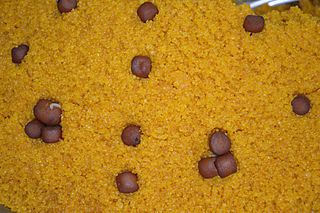
Mihidana is an Indian sweet from Burdwan, West Bengal, India. Mihidana, described as the micro cousin of the traditional Boondi, is derived from two words, Mihi meaning fine, and Dana, meaning grain.

Sitabhog is a famous sweet of Bardhaman, West Bengal, India. Sitabhog is a flavourful dessert that looks like white rice or vermicelli mixed with small pieces of Gulab jamun. Made from cottage cheese, rice flour and sugar, Sitabhog often gives the appearance of pulao, which is albeit sweet in taste.



















